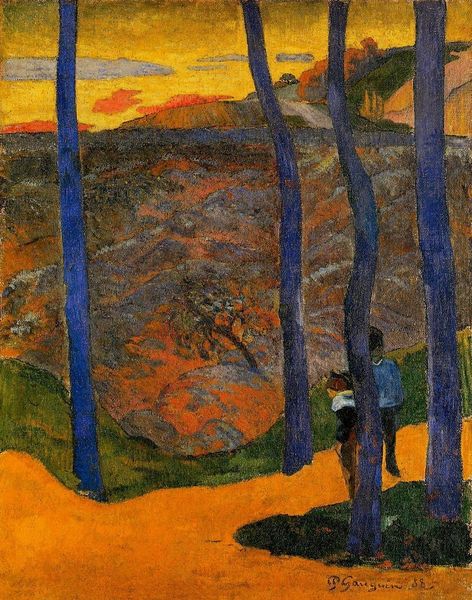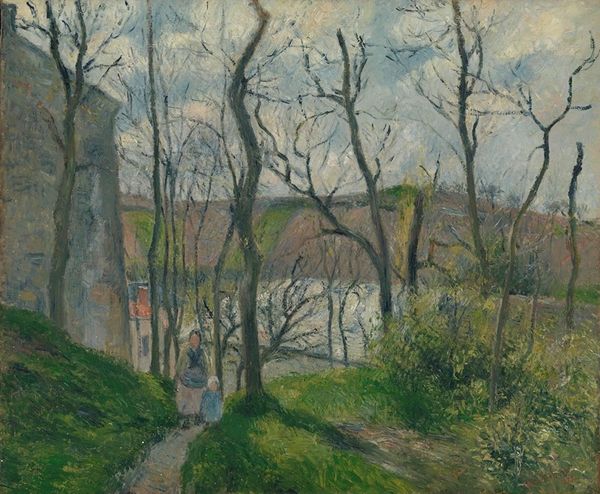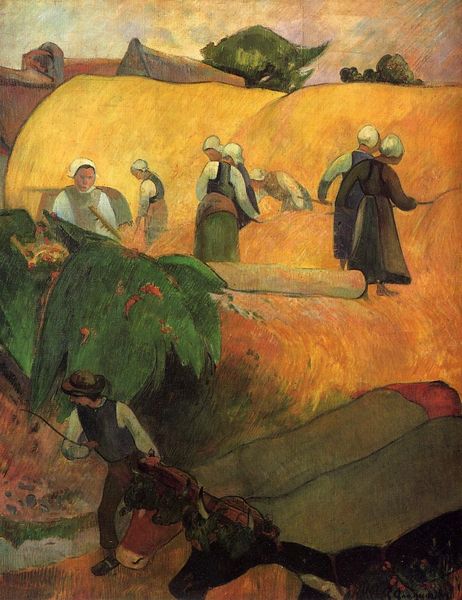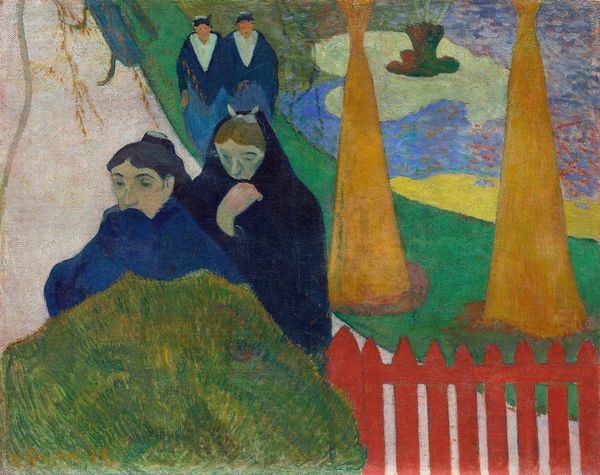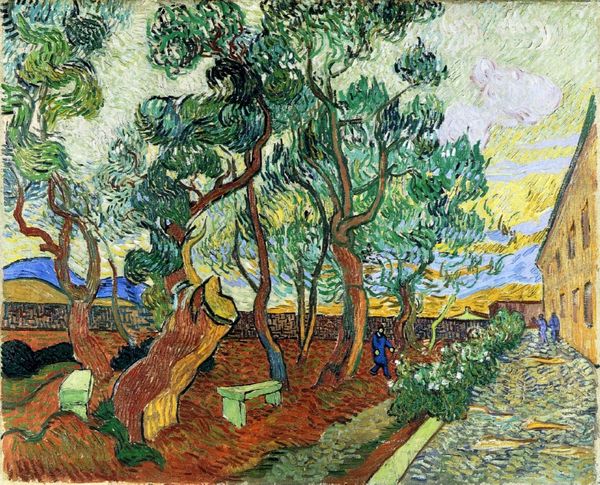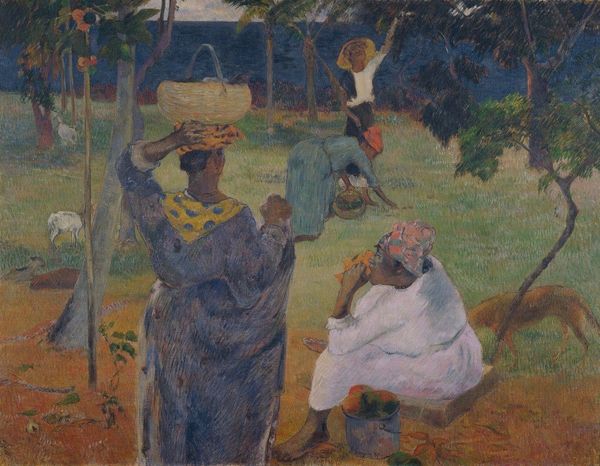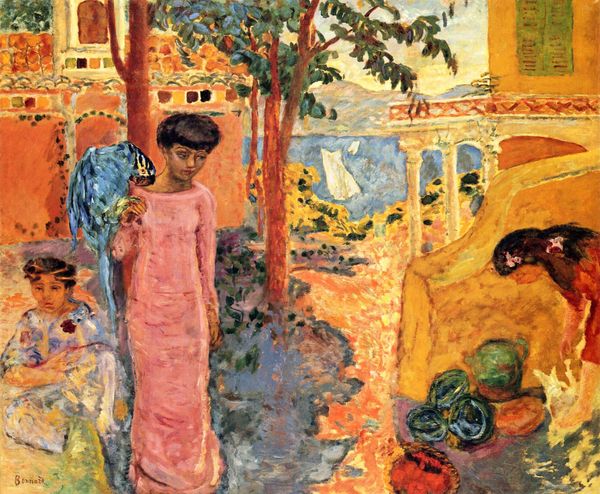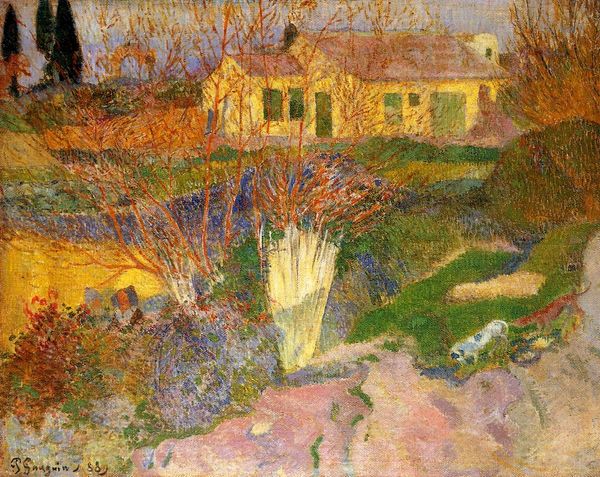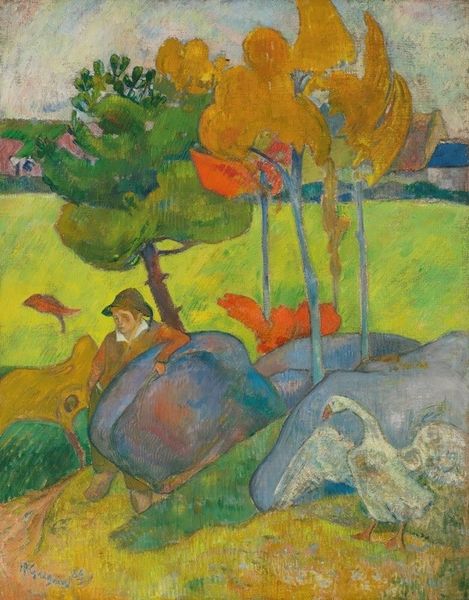
painting, oil-paint
#
narrative-art
#
painting
#
oil-paint
#
landscape
#
house
#
figuration
#
oil painting
#
naive art
#
genre-painting
#
post-impressionism
Copyright: Public domain
Curator: So, here we have Paul Gauguin's "Houses in le Pouldu," painted around 1890. A genre scene rendered in oil on canvas, offering a glimpse into rural life. Editor: It has this compellingly primitive, raw quality. The color palette—deep blues, oranges, and greens—almost fights each other, but somehow it works. Curator: Indeed. The slightly awkward perspective and bold colors reflect Gauguin's broader artistic project; a rejection of academic naturalism in favor of conveying subjective experience, which was linked to his perception of life in rural Brittany, France. Gauguin's search was aimed toward simpler, more authentic ways of life and representation, in contrast to the industrialized Paris he left behind. Editor: The way he simplifies form and flattens the picture plane is striking. See how the trees become these dark vertical accents slicing the background? The thatched roofs atop each other feel less like a faithful representation of buildings and more like components of a designed whole. Curator: His Post-Impressionistic style is clearly coming to the fore here. Gauguin found le Pouldu especially captivating. Other artists such as Émile Bernard also found solace in this village that was separated from urban influence. Gauguin embraced the decorative and symbolic potential of color and form in rendering images in Brittany. Editor: The figures on the right have a flattened presence, as they also dissolve into their setting, and even become further flattened within their visual composition. And those almost abstract strokes of color comprising the earthy mound are fascinating in their artifice. There’s a calculated tension between the representational and the abstract. Curator: Absolutely. And it's important to remember that while Gauguin sought authenticity in these rural settings, his vision was always filtered through his own aesthetic and cultural lens. It wasn't necessarily an accurate representation, but an interpretation informed by his personal quest. The symbolic is something that seems consistent with Post-Impressionism in general, right? Editor: Without a doubt. It gives viewers an invitation to not just observe but to deeply consider the underlying structure. Thanks for shedding some light on "Houses in le Pouldu"! Curator: My pleasure. These dialogues are never short of enlightening for our listening public, with a great painting to keep in mind.
Comments
No comments
Be the first to comment and join the conversation on the ultimate creative platform.

